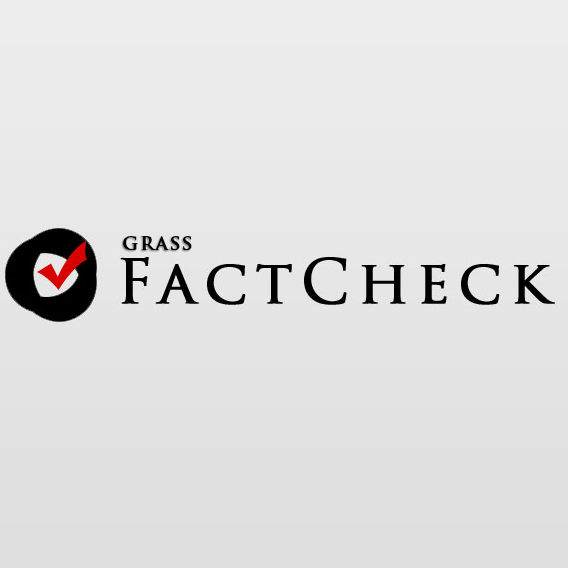Shalva Papuashvili: “The economic gap between Georgia and Moldova has tripled in three years whilst Moldova’s economy has entered negative growth.”
Verdict: FactCheck concludes that Shalva Papuashvili’s statement is MOSTLY TRUE.
Georgia’s economy was valued at USD 18.9 billion in current prices in 2021 as compared to Moldova’s USD 13.7 billion. Georgia’s economy had grown to USD 33.8 billion by 2024 whilst Moldova’s reached USD 18.1 billion. The gap between the two economies widened from USD 5.2 billion in 2021 to USD 15.7 billion in 2024.Inflation distorts the real picture, so comparing the GDP at constant prices gives a more accurate view. In constant 2015 prices, Georgia’s economy constituted USD 19.2 billion in 2021, whilst Moldova’s was USD 9.6 billion. Georgia’s GDP had reached USD 25.1 billion whereas Moldova’s had shrunk to USD 9.3 billion by 2021. The gap widened from USD 9.6 billion in 2021 to USD 15.8 billion in 2024. Georgia’s economy was twice the of Moldova’s in 2021 and 2.7 times larger by 2024.Georgia’s economy expanded by a total of 31% whilst Moldova’s contracted by 3.4% between 2022 and 2024. Moldova slipped into recession in 2022 and the low growth recorded in 2023 and 2024 was insufficient to offset the decline.Georgia experienced rapid growth during 2022-2024 whilst Moldova’s economy moved the opposite direction. As a result, the gap between the two widened – however, not threefold (nominal price calculations alone do not represent the full picture).Shalva Papuashvili also discussed the reasons behind the trend in his post – a topic FactCheck does not evaluate and cannot assess in terms of how Georgia’s GDP might have evolved under a different economic policy. Excluding the political part of the post and considering that the figures are mostly correct with some minor inaccuracies, FactCheck concludes that the economic part of Shalva Papuashvili’s statement is MOSTLY TRUE.
Analysis
Shalva Papuashvili published a social media post on the economic growth of Georgia and Moldova, writing: “How did the gap between the two economies triple in three years – from USD 4.8 billion to USD 15.7 billion? Why is Moldova’s economic growth in negative territory whilst Georgia’s is the highest in the region?” The post includes two graphs – the first shows the nominal of Georgia’s and Moldova’s economies from 2021 to 2024 (source: IMF) whereas the second illustrates their economic growth rates over the same period (source: World Bank).
Georgia’s nominal GDP totalled USD 18.9 billion in 2021, rising to USD 33.8 billion by 2024. Moldova’s economy constituted USD 13.7 billion and USD 18.1 billion in 2024. The graph shared by Shalva Papuashvili contains slight inaccuracies for Georgia in 2021 and 2022: it lists USD 18.5 billion instead of USD 18.9 billion for 2021 and USD 24.5 billion instead of USD 25 billion for 2022. Data from GeoStat, the IMF and the World Bank are identical, so the source of this discrepancy is unclear. The figures for Moldova match those reported by the IMF.
Graph 1: GDP in Current Prices (USD Million)
Source: International Monetary Fund
The gap between Georgia’s and Moldova’s economies was USD 5.2 billion in 2021 – not USD 4.8 billion. This gap had grown to USD 15.7 billion by 2024. The discrepancy is relatively minor, especially considering that the post itself emphas the gap tripling over the period (15.7 ÷ 5.2 = 3.02).
However, comparing nominal economic figures over time does not provide a complete picture due to the impact of inflation. A more accurate assessment comes from comparing the GDP at constant prices. In constant 2015 prices, Georgia’s economy constituted USD 19.2 billion in 2021 whilst Moldova’s was USD 9.6 billion. Georgia’s GDP had reached USD 25.1 billion whereas Moldova’s had shrunk to USD 9.3 billion by 2021. The gap widened from USD 9.6 billion in 2021 to USD 15.8 billion in 2024. Georgia’s economy was twice the of Moldova’s in 2021 (100% difference) and 2.7 times larger by 2024 (170% difference).
Graph 2: GDP in Constant 2015 Prices (USD Million)
Source: World Bank
On one hand, the real gap did not triple, but on the other, whilst Georgia’s economy grew rapidly, Moldova’s real GDP contracted. It is noteworthy that Moldova’s economy grew slowly but steadily by 22% between 2013 and 2019 – from USD 7.2 billion to USD 9.5 billion. Georgia’s growth was also moderate during the same period with the real GDP rising by 30% from USD 14.2 billion to USD 18.5 billion.
The second diagram shared by Shalva Papuashvili showed economic growth rates. Although figures for both Georgia and Moldova are correct, there is an important detail. Most countries experienced a sharp economic contraction in 2020 due to COVID-19 and related restrictions. As restrictions eased and businesses reopened in 2021, the base effect contributed to rapid growth. Georgia’s economy shrank by 6.3% and Moldova’s by 8.3% in 2020 whilst in 2021, Georgia’s GDP grew by 10.6% and Moldova’s by 13.9%.
Graph 3: GDP Growth Rates
Source: World Bank
The tone of Shalva Papuashvili’s post suggested that Moldova had better starting conditions following the pandemic but external interventions eroded this advantage, whilst Georgia achieved rapid growth, acting independently. FactCheck cannot assess how different economic policies might have affected GDP growth in either country. His statements are mostly accurate numerically: Georgia’s economy grew by 31% between 2022 and 2024 whilst Moldova’s contracted by 3.4%. Georgia’s GDP had expanded by 36% by 2024 as compared to 2019 and Moldova’s just 1% but the gap in growth rates became more evident between 2022 and 2024. Despite the widening growth-rate difference, the real economic gap between the two countries did not triple.
Excluding the political part of the post and considering that the figures are mostly correct with some minor inaccuracies, FactCheck concludes that the economic part of Shalva Papuashvili’s statement is MOSTLY TRUE.








